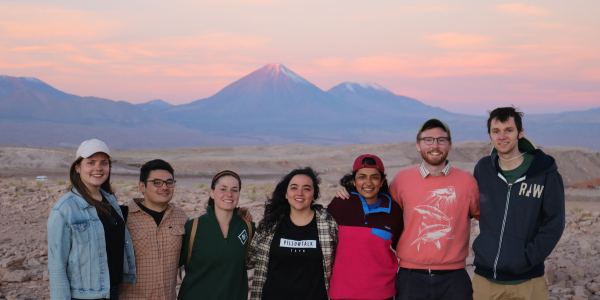Students receive transfer credit for most courses taken on study abroad programs. It is important that students communicate with their departmental study abroad advisor when selecting programs and transferring credit.
To Transfer Credit:
- Official Transcript: Students must make sure that an original, sealed program transcript is sent to Overseas Programs and not to the registrar or to the students’ home. Foreign institutions can take some time to send transcripts.
- Study Abroad Credit Request Questionnaire: The questionnaire and the student's study plan can be accessed on the Study Abroad Portal. Include a summary of the coursework taken abroad and your preference for how the courses will satisfy WUSTL requirements. Refer to Academic Requirements.
- Portfolio: If the student's department requires a portfolio, it must be submitted directly to the department. A portfolio typically consists of syllabi and coursework saved from abroad and sometimes also includes an additional reflection essay or assignment from the department.
Credit processing cannot begin until the student completes these steps!
Credit Transfer Process
The student's file goes to each department from which the student is requesting credit and is then sent to the registrar. The process typically takes 4-6 weeks once the three steps above are completed.
- Student: Student completes transfer credit steps
- Departments: Students file is sent by Overseas Program to each department from which requesting credit
- Overseas Programs: Student's file is completed by Overseas Programs
- Registrar: Student's file sent to the Registrar and credit is applied to record
Study Abroad Credit on Record
Students can view their study abroad credit on the WebSTAC student record. Courses taken from Washington University faculty abroad are recorded the same way as courses taken on campus. Study Abroad courses taken from another institution will appear on the student's record as displayed below.
Before Credits Transfer: While students are abroad they are enrolled in an L99 Course. A number appears under units as a placeholder amount for the course units, which enables Washington University systems to continue to function as if the student was on campus.
After Credits Transfer: Once the Registrar transfers study abroad credit to a student's transcript, 0 units will appear under the units section of the abroad semester. To view the transferred credit in Webstac, select the Academics tab, then Unofficial transcript, and scroll down to find the 'Other Credits' section. Note: Distribution credit waivers will appear on a copy of the student's current PlanIt named "Plan with ArtSci Waivers- COPY ONLY".
How Unpassed Courses Appear on the WashU Record:
Arts & Sciences Students: If students do not successfully complete at least 12 credits of coursework (with a C or higher), the credits of the study abroad placeholder course will be adjusted to reflect the gap between full-time enrollment (12 credits) and credits successfully completed. For example, if students successfully complete 9 credits, the placeholder class will appear on the transcript as 3 credits with an Unsatisfactory grade and the remaining 9 credits successfully completed will be reflected in the “other credit” section of the WashU transcript for most semester programs.
If students successfully complete 12 credits of classes and fail additional coursework, the failed courses will not appear on the WashU transcript, but post-graduate opportunities will see the failing grade(s) on the host university/program study abroad transcript.
McKelvey Students: Please consult Dean Osborn or Andrew Swafford about policy that applies for unsatisfactory EN coursework.

